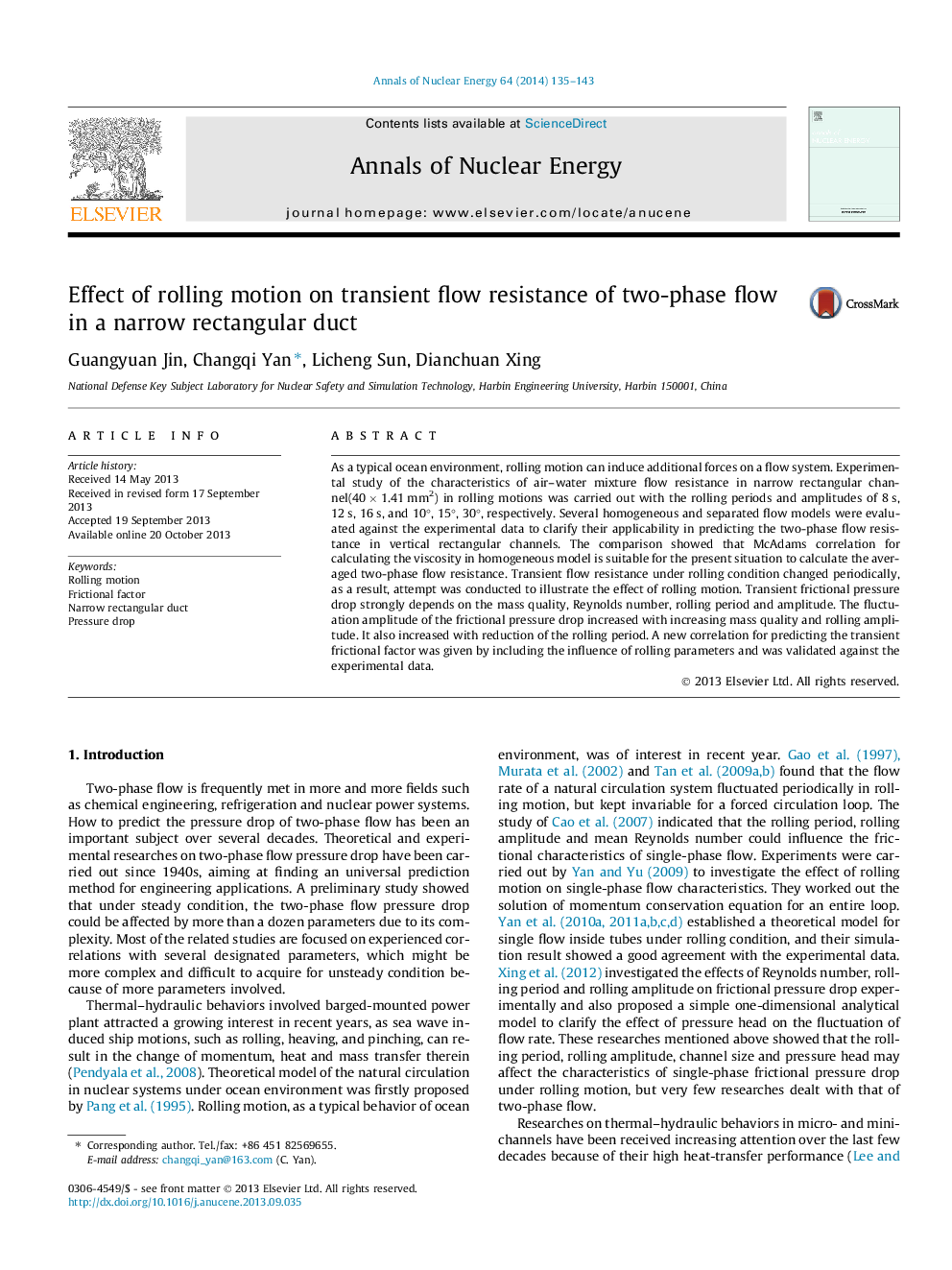| Article ID | Journal | Published Year | Pages | File Type |
|---|---|---|---|---|
| 1728494 | Annals of Nuclear Energy | 2014 | 9 Pages |
Highlight•The frictional resistance in narrow rectangular channel in rolling motion is studied.•Homogeneous correlations could predict the experimental data in vertical condition.•Increasing the two-phase velocity would weaken the fluctuation of friction factor.•The frictional factor has a great similarity with the frictional pressure drop.
As a typical ocean environment, rolling motion can induce additional forces on a flow system. Experimental study of the characteristics of air–water mixture flow resistance in narrow rectangular channel(40 × 1.41 mm2) in rolling motions was carried out with the rolling periods and amplitudes of 8 s, 12 s, 16 s, and 10°, 15°, 30°, respectively. Several homogeneous and separated flow models were evaluated against the experimental data to clarify their applicability in predicting the two-phase flow resistance in vertical rectangular channels. The comparison showed that McAdams correlation for calculating the viscosity in homogeneous model is suitable for the present situation to calculate the averaged two-phase flow resistance. Transient flow resistance under rolling condition changed periodically, as a result, attempt was conducted to illustrate the effect of rolling motion. Transient frictional pressure drop strongly depends on the mass quality, Reynolds number, rolling period and amplitude. The fluctuation amplitude of the frictional pressure drop increased with increasing mass quality and rolling amplitude. It also increased with reduction of the rolling period. A new correlation for predicting the transient frictional factor was given by including the influence of rolling parameters and was validated against the experimental data.
